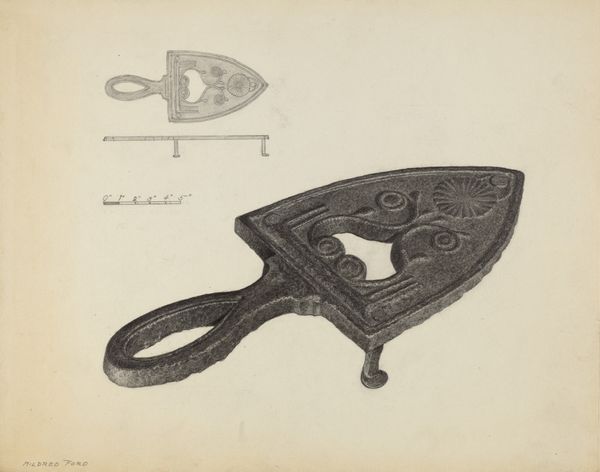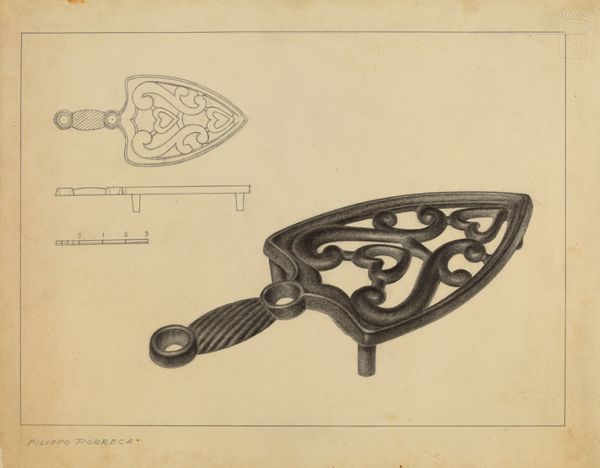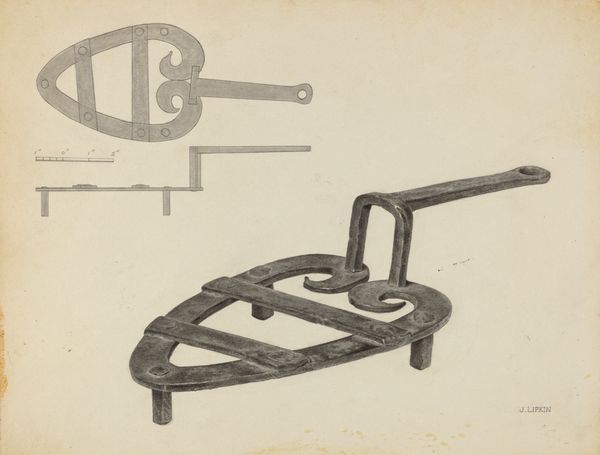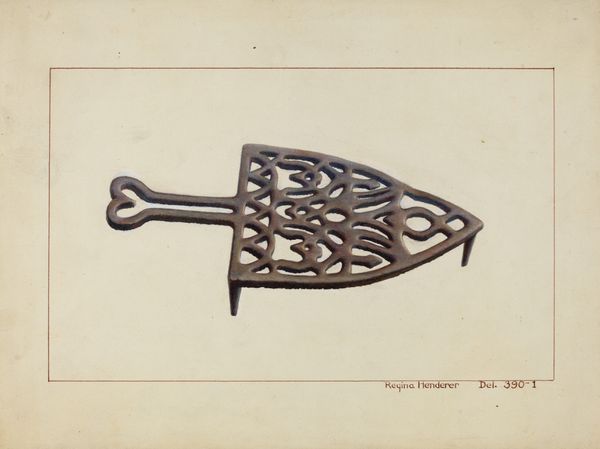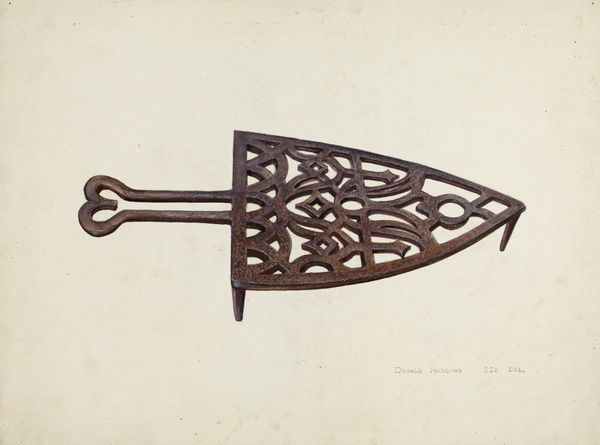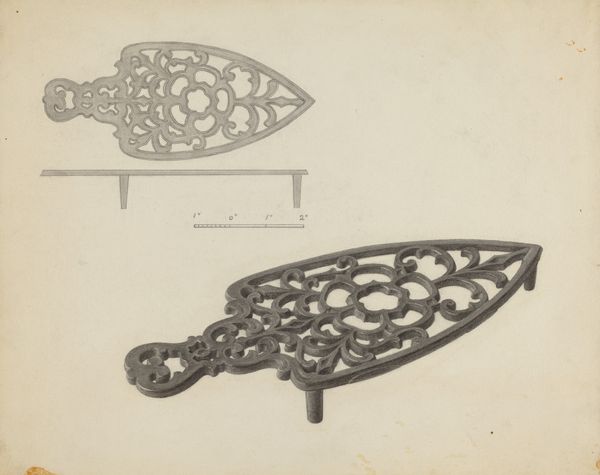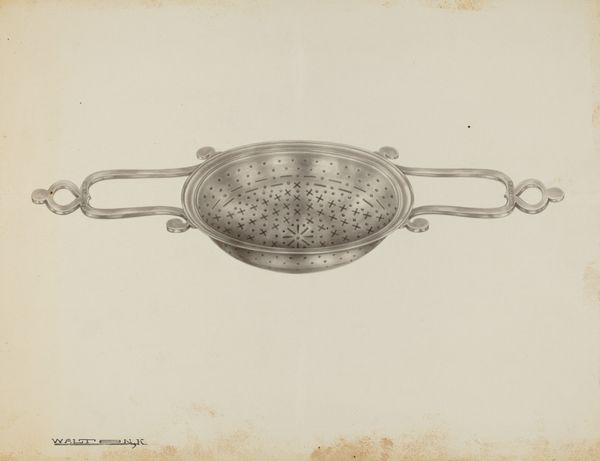
drawing, paper, pencil
#
drawing
#
paper
#
pencil
#
academic-art
#
realism
Dimensions: overall: 22.8 x 28.7 cm (9 x 11 5/16 in.) Original IAD Object: 9 1/4" long; 4" wide; 1 1/8" high
Copyright: National Gallery of Art: CC0 1.0
Curator: Here we have a pencil drawing on paper entitled "Flat Iron Holder," created around 1939 by Filippo Porreca. What are your immediate impressions? Editor: It feels so…quietly competent. Like a celebration of everyday usefulness, you know? It’s a still life, sure, but the kind that hints at stories: Sunday mornings, the smell of ironing and breakfast… a grounded calm. Curator: Absolutely. I think understanding the context is essential. Porreca worked as an artist for the Historic American Buildings Survey, and this drawing exemplifies the project's core mission: documenting vernacular architecture and industrial design. He's capturing the dignity and significance of common objects often overlooked by art history. Editor: See, that adds another layer! It transforms it from just a pleasant rendering to an act of preservation. It makes me consider how such an ordinary item speaks volumes about a past way of life and even about gendered labor. Curator: Precisely! And this resonates so profoundly with feminist and labor studies. Consider how much time and labor was devoted to the simple act of ironing clothing. We see this rendered functional object through the lens of the people, primarily women, who relied on it. It becomes a tangible representation of domesticity. Editor: Yes! I like that he’s included a scale – it’s part aesthetic choice and also completely technical. Like, I can *see* it so clearly… feel the weight. I get the sense that the artist wasn’t trying to pretty things up; the realism feels almost reverential, almost gritty. It brings that world back to life for me. Curator: That echoes a social-realist impulse, that the art-making captures lived experience in its material, quotidian reality. The drawing almost functions as an anthropological document and, at the same time, offers viewers like us, in a completely different era, a point of entry for reflection and dialogue. Editor: So true. Seeing art in something we consider completely functional challenges us. Thank you, Porreca, for highlighting both the simplicity and the complex human experience. Curator: And thank you for drawing our attention to that powerful tension! Hopefully our audience can now reflect on how "everyday" objects embody important social, political, and deeply personal connections.
Comments
No comments
Be the first to comment and join the conversation on the ultimate creative platform.
